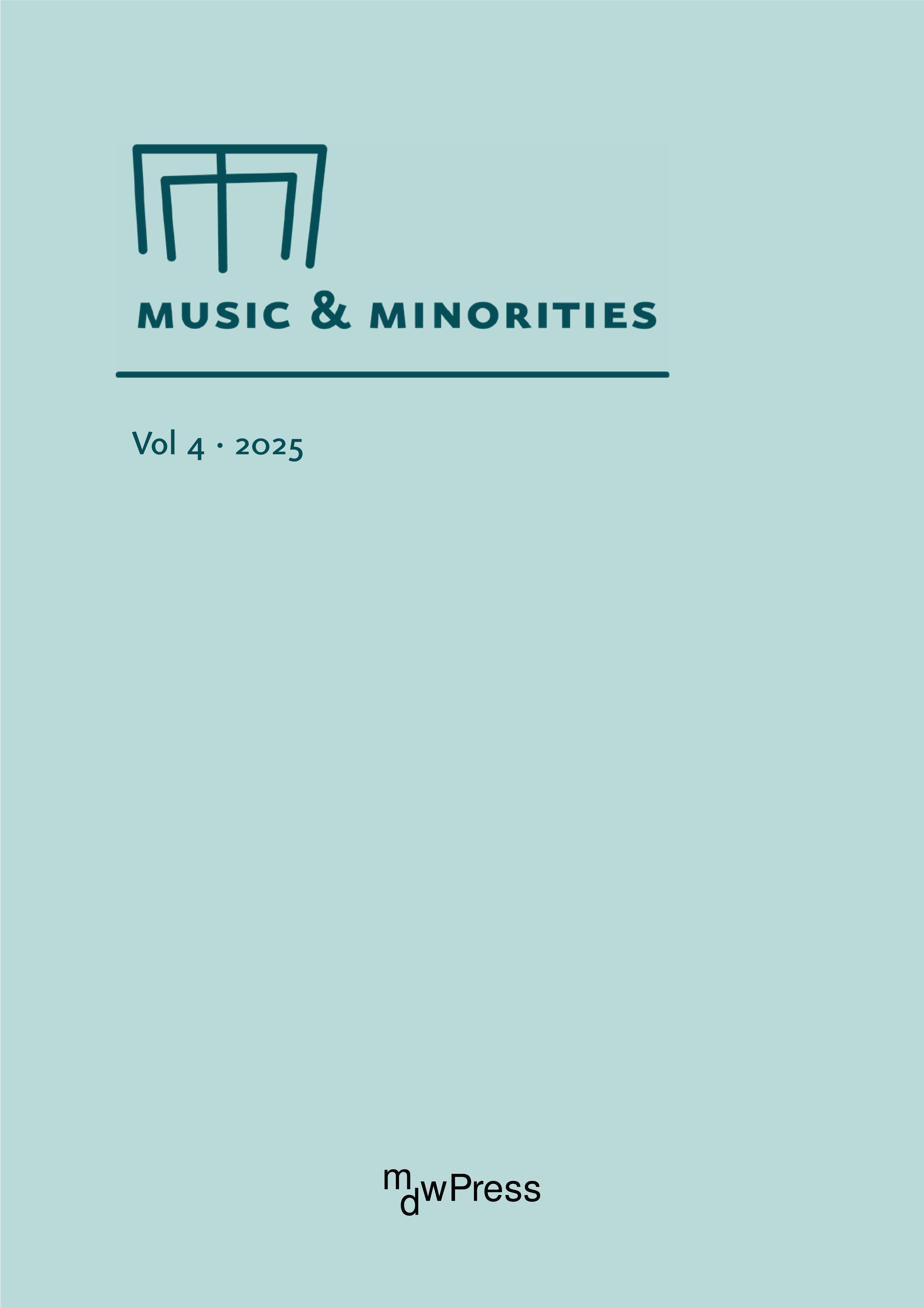Stories and Memories of Sinti Estraixaria
A Look at the Past and Present of a Dynasty of Musicians
DOI:
https://doi.org/10.52413/mm.2025.30Keywords:
Sinti Estraixaria, Cultural heritage, Community of practice, Music making and identity constructionAbstract
Sinti Estraixaria (“Austrians”) represent one of the minorities that make up the peculiar cultural landscape of Trentino-Alto Adige, in north-eastern Italy. In this border area – the last western offshoot of what was once the Austro-Hungarian Empire – Sinti families, characterised by a certain degree of mobility, have progressively settled over the last two centuries, while continuing in part to practice crafts of an itinerant nature. Among these, music has traditionally played a prominent role, consolidating itself as a knowledge that – handed down from father to son – has given rise to veritable “dynasties” of players. Between the Sixties and the Eighties of the 20th century, the ingenuity of certain family musical ensembles ensured that the “craft of the musician” took shape as a “profession” – with even fortunate results for certain periods – although then the world of Gage, with its “rules” and bureaucracy, presented these protagonists with challenges that were in some ways insurmountable.
Today, music for young and old Sinti who in the meantime have become gardeners, waiters, iron pickers and mechanics, remains, rather than a profession, a heritage from the past. However, music contributes strongly to their own identity construction: although the moments of shared musical practice have become more sparse – more and more reserved for spectacular contexts in the sphere of a few events very often organised by the Sinti cultural associations themselves – a dialogical dimension nevertheless remains alive, which focuses on the evocation of an almost “mythical” past populated by exceptional musicians. Starting from the dialogue with some of these witnesses of ancient and modern times, a broader family and community history deeply linked to musical activity will be reconstructed; specifically, the present paper will focus on how the protagonists of said story, members of one of the most musically active families in the last sixty years, keep alive the memory of their musical past and constantly confront the latter with their present. At the same time, the paper aims to highlight how their musical competence matured within such a “community of practice” (see Wenger 1999), and the dialogical dimension that music is able to stimulate, come to configure themselves as key instruments also from the point of view of the analysis and interpretation of sound documents from the past, making ethnomusicological investigation itself a field of exchange, knowledge and collaboration.
Published
Issue
Section
License
Copyright (c) 2025 Antonella Dicuonzo

This work is licensed under a Creative Commons Attribution-NonCommercial 4.0 International License.
Contributions to M&M are published under a Creative Commons Attribution-NonCommercial 4.0 International (CC BY-NC 4.0) license. Parts of an article may be published under a different license. If this is the case, these parts are clearly marked as such.




